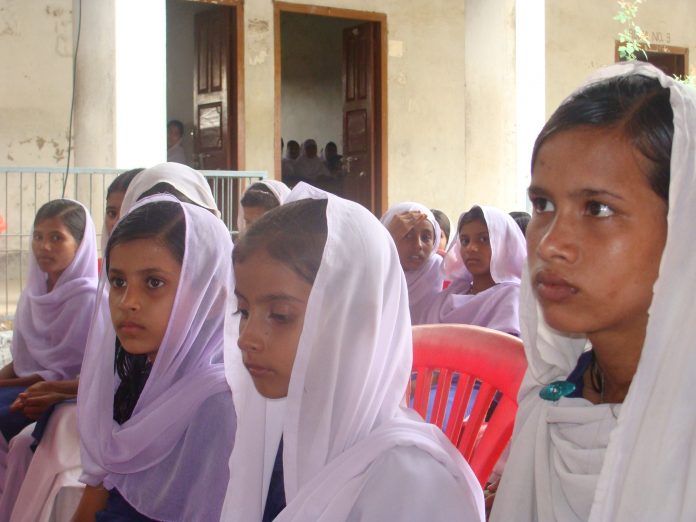The research highlights how the educational marginalization of Muslims in India starts at an early age itself and reveals that growth in literacy rates among Muslims is much less than among SCs/STs.
Shalini S, TwoCircles.net
Muslim children face systematic exclusion at the pre-primary level at private schools in New Delhi, the national capital of India, a new research has pointed out.
The research article titled “Early Educational Marginalization for Muslim Children in India: An Analysis of Nursery School Admission in Private Schools of Delhi, India” was published by the American Institute of Policy development in December 2020. The article highlights how “educational marginalization of Muslims in India starts at an early age itself.” The study was conducted by Jannat Fatima Farooqui, who is a Research Scholar at the Department of Social work Delhi University and Sukanya Sen, a Consultant at the National Commission for Protection of Child Rights, New Delhi.
“The growth in literacy rates among SCs/STs has been higher than that of Muslims,” says the research article.
The study identified that out of the total Muslim Children who applied to private – unaided schools in Delhi at nursery level, only less than 3% of the children got admission and 94% were dismissed. “Certain schools show shocking data of Zero admission of Muslim children,” the study says.
The study points out that in Delhi, admissions are given through a rigid point system, “wherein points are given for criteria like neighbourhood distance, siblings in school, either parent as alumni, girl child point, either parent a staff of the school, and education of parents etc.”
“Disadvantaged neighbourhoods such as slums and ghettos are likely to have a lesser number of private schools. Therefore, the neighbourhood restriction limits access and choice for Muslim students. Further, a majority of Muslim students do not have parents who have been alumina of the school, who are staff/teachers in the school and who have a sibling in private school. This results in an intergenerational vicious cycle of educational marginalization for Muslim children in the country,” the study says.
Even when the girl children are at advantage in the point system, the admission ratio of Muslim girl children remains less compared to that of boys. “Reasons derived for this are poverty, preference of boy child education, reluctance towards co-ed and secular schooling, inclination towards madrasa education for girls,” the study says.
As per the study, the ratio of Muslim children who got admission under EWS/DG category in the private schools is relatively higher compared to the admission of Muslim children under the general category, as “section 12 of the Right of Children to Free and Compulsory Education Act, 2009 in India has made it compulsory for every private unaided school to admit at least 25% of its entry-level class from children belonging to economically weaker and disadvantaged groups.”
However, this “higher percentage of EWS/DG category of Muslim students can be (is) reflective of the low socioeconomic conditions of the community.”
The research article particularly identifies Muslim girl children as a vulnerable entity and suggest that “foundations need to be laid through quality early childhood care and education (UNICEF, 2016). This will become fundamental in alleviating marginalization faced by children born into socially and economically disadvantaged groups like Muslims in India.”
Unremitting studies like this open up a significant debate on the even-handedness in the Indian education system and challenge the concealed motives and grey areas of policies like National Education Policy (NEP) 2020 that has caused great discomfort to the marginalized and minority communities.


